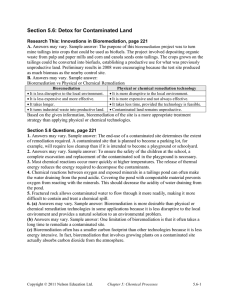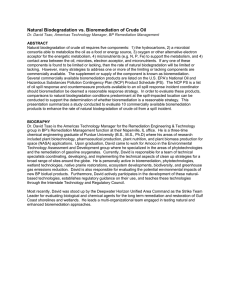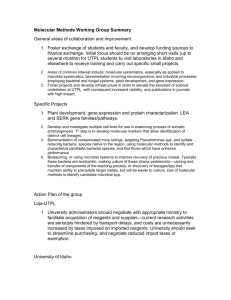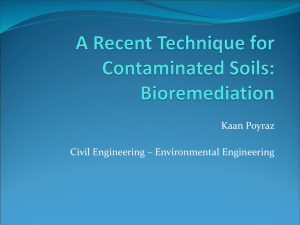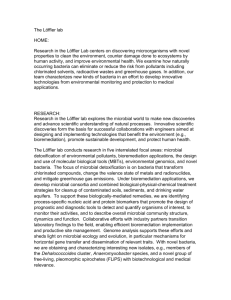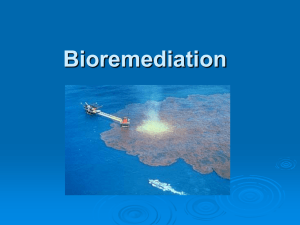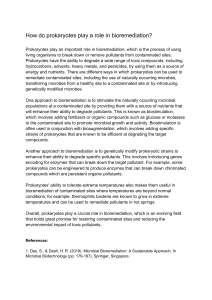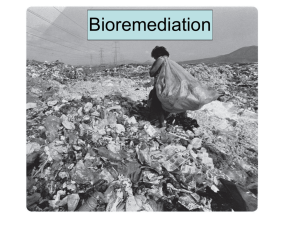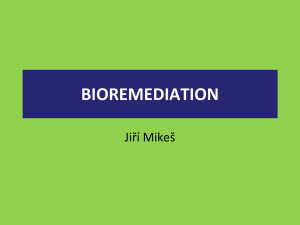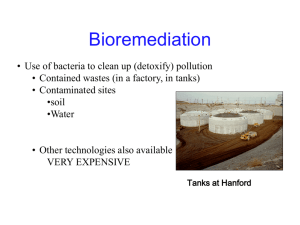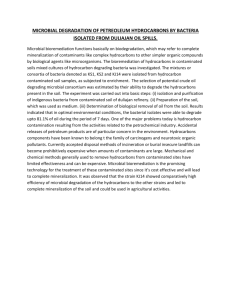Challenges facing field applications of
advertisement
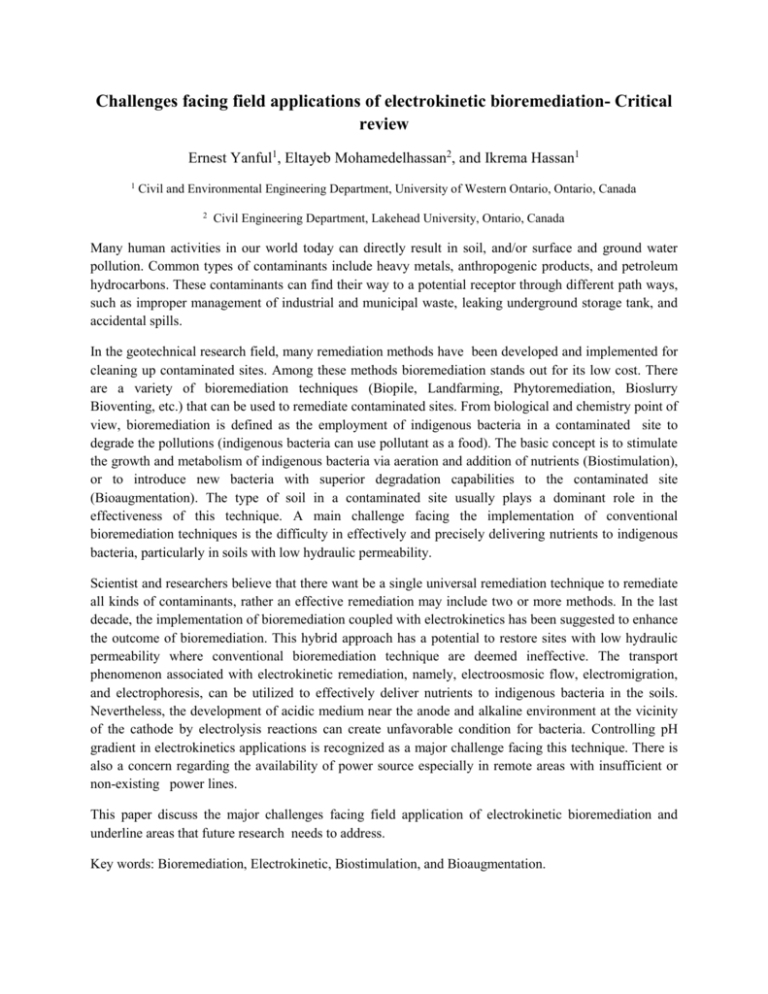
Challenges facing field applications of electrokinetic bioremediation- Critical review Ernest Yanful1, Eltayeb Mohamedelhassan2, and Ikrema Hassan1 1 Civil and Environmental Engineering Department, University of Western Ontario, Ontario, Canada 2 Civil Engineering Department, Lakehead University, Ontario, Canada Many human activities in our world today can directly result in soil, and/or surface and ground water pollution. Common types of contaminants include heavy metals, anthropogenic products, and petroleum hydrocarbons. These contaminants can find their way to a potential receptor through different path ways, such as improper management of industrial and municipal waste, leaking underground storage tank, and accidental spills. In the geotechnical research field, many remediation methods have been developed and implemented for cleaning up contaminated sites. Among these methods bioremediation stands out for its low cost. There are a variety of bioremediation techniques (Biopile, Landfarming, Phytoremediation, Bioslurry Bioventing, etc.) that can be used to remediate contaminated sites. From biological and chemistry point of view, bioremediation is defined as the employment of indigenous bacteria in a contaminated site to degrade the pollutions (indigenous bacteria can use pollutant as a food). The basic concept is to stimulate the growth and metabolism of indigenous bacteria via aeration and addition of nutrients (Biostimulation), or to introduce new bacteria with superior degradation capabilities to the contaminated site (Bioaugmentation). The type of soil in a contaminated site usually plays a dominant role in the effectiveness of this technique. A main challenge facing the implementation of conventional bioremediation techniques is the difficulty in effectively and precisely delivering nutrients to indigenous bacteria, particularly in soils with low hydraulic permeability. Scientist and researchers believe that there want be a single universal remediation technique to remediate all kinds of contaminants, rather an effective remediation may include two or more methods. In the last decade, the implementation of bioremediation coupled with electrokinetics has been suggested to enhance the outcome of bioremediation. This hybrid approach has a potential to restore sites with low hydraulic permeability where conventional bioremediation technique are deemed ineffective. The transport phenomenon associated with electrokinetic remediation, namely, electroosmosic flow, electromigration, and electrophoresis, can be utilized to effectively deliver nutrients to indigenous bacteria in the soils. Nevertheless, the development of acidic medium near the anode and alkaline environment at the vicinity of the cathode by electrolysis reactions can create unfavorable condition for bacteria. Controlling pH gradient in electrokinetics applications is recognized as a major challenge facing this technique. There is also a concern regarding the availability of power source especially in remote areas with insufficient or non-existing power lines. This paper discuss the major challenges facing field application of electrokinetic bioremediation and underline areas that future research needs to address. Key words: Bioremediation, Electrokinetic, Biostimulation, and Bioaugmentation.
